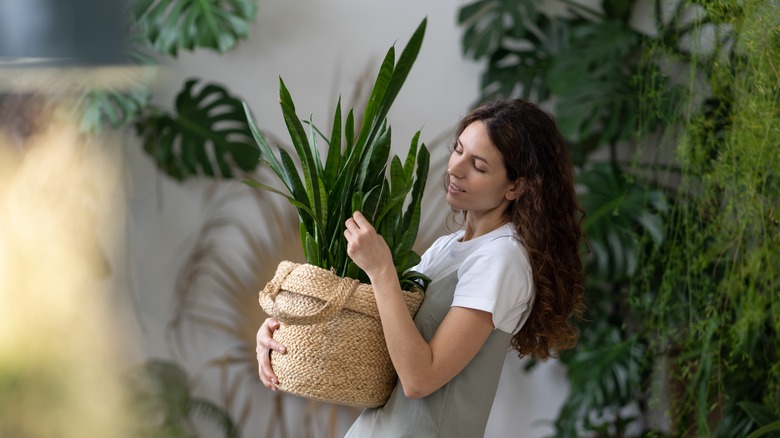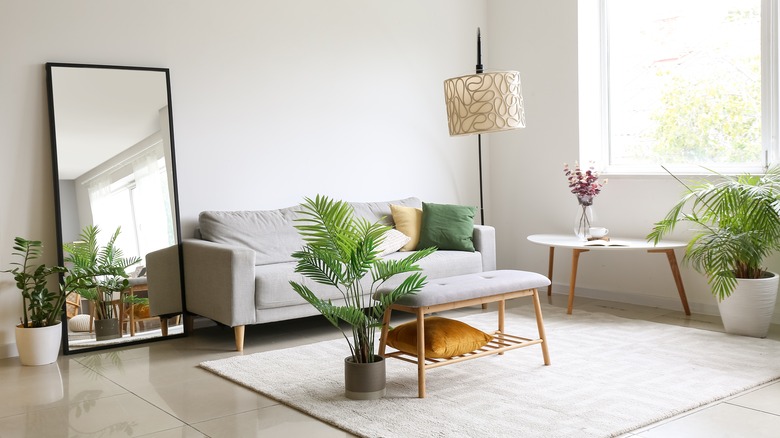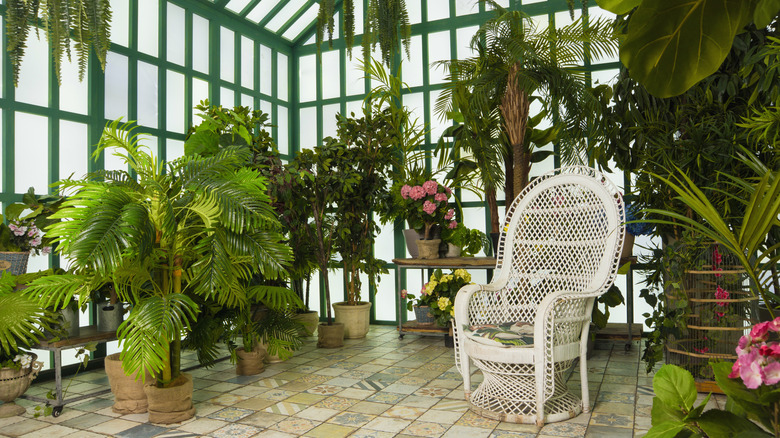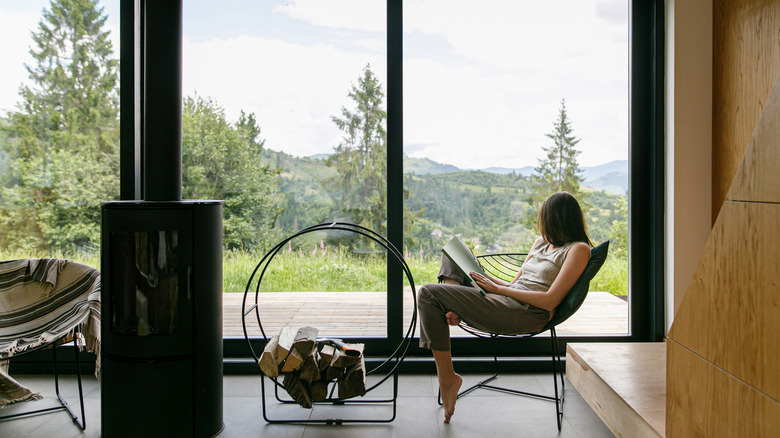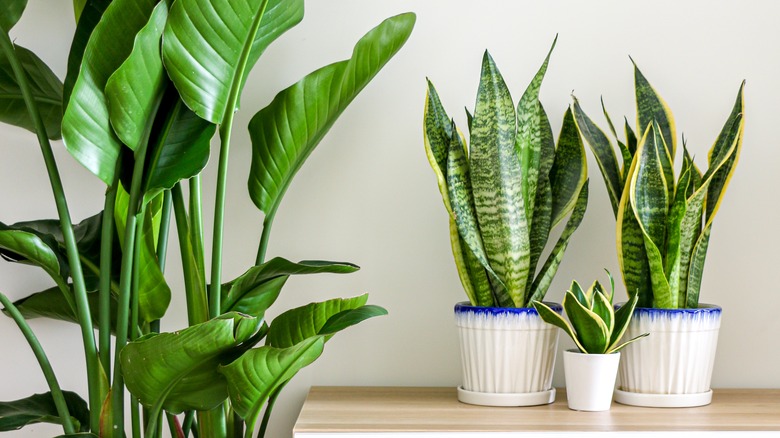5 Tips To Help You Find A Home That's Great For Plants
Houseplants are nothing new, but they have become a major trend in home décor in recent years. Younger generations have taken this classic practice to the max, filling their homes with potted plants from mail-order services and local plant boutiques.
There are even social media groups and forums dedicated to showing off your plant collection, swapping cuttings, and getting plant care advice, says Houseplant Resource Center. Filling your home with foliage has plenty of benefits like making you feel closer to nature and allowing you to nurture something. After all, there's nothing more satisfying than taking care of something and watching it thrive.
People who collect plants feel connected to them. With all the time and effort you put into caring for them, they can feel like pets in some ways. So when you're looking to move to a new home, you'll likely want to consider the environment that they're going to live in. Choosing a home based solely on what's best for your plants can also benefit you.
Look for windows, skylights, balconies, and patios
One thing everyone learned in elementary school science class is that plants need light to grow. So if you're looking for a home where your plants can grow huge leaves, look for large windows or skylights. Both will bring plenty of natural light into the room that your plants can use to photosynthesize. The same can be said for balconies and patios. These outside areas can be great for sun-loving plants and larger plants that might take up too much room indoors.
A home with plenty of natural light is great for both you and your plants. This can also help you know which windows to place your plants in. Plants that like full sun need at least six to eight hours of direct sun, according to Alsip Nursery, so your brightest window is the best location. Part sun and part shade plants both need about three to six hours of sunlight, so these can be shadier locations that still get a lot of bright light.
A sunroom is a major plus
A plant lover's dream is a sunroom attached to their home. A sunroom can provide a dedicated space to place your plants and an environment that you can control to best grow them. These rooms get optimal sun and can be closed off to control temperature and humidity. But you don't only need to place your plants here. Adding comfortable sofas creates a tranquil room to read or relax.
If a potential home you're looking at already has a sunroom, then consider yourself lucky. But if a home doesn't already have one, you don't need to go without. You can have a small sunroom built for as little as $5,000, according to Angi. Or go all out and create a luxury sunroom for as much as $140,000. The cost depends on the size, material, labor, and the kind of sunroom you build.
Four-season rooms are insulated and comfortable to use year-round. A three-season room is similar but will be colder in the winter, an option that might not be the best for plants. Glass solariums are made of all glass, even the roof, and a garden room is akin to a greenhouse.
The sunnier the better
Experts will always stress the importance of choosing a home based on location. Your plants might not care about living in one neighborhood or another or if you're within walking distance of good restaurants. When it comes to plants, location is more about how much sun the lot gets. Heavily wooded locations can be pretty and serene, but if there are a lot of tall trees that block sunlight from coming into the house, it won't be great for plant growth. The same can be said for homes with neighbors close by.
You may also want to consider the direction your home and the windows are facing, as this can affect the kind of light coming through your windows. North-facing windows in the Northern Hemisphere receive no direct sunlight throughout the day, according to Leon and George. In contrast, south-facing windows receive the most bright light throughout the entire day. East-facing windows get a lot of morning sun, whereas west-facing windows get the midday and evening sun.
Consider moisture levels
After sunlight, water is the most important plant necessity. Plants absorb the hydrogen from water through their roots as part of the photosynthesis process, according to West Virginia University. But plants also need to have proper moisture in the air. Dry air can often lead to leaves that feel crispy, yellow, and die off. So if the air in your home is feeling dry, that could be a problem for plant health — and yours. Your lips and skin might feel dry and cracked, similar to your plants' leaves.
Dry air is often caused by poor insulation and the outside air seeping into your home, according to Summers & Zim's, Inc. Your central heating system might also be the culprit. But if your home has dry air, you can add moisture back with humidifiers, which can benefit both you and your plants. For a more concentrated humidity, you can use pebble trays underneath your plants.
You can still use darker spaces
So, you've found the perfect house, but it has a few darker corners than you prefer. That doesn't mean you have to give up any member of your plant collection. Fill those spaces with low-light plants that can thrive even without bright light. Zamioculcas zamiifolia, or ZZ plants, are known for being able to thrive with little light and water, according to Costa Farms. Snake plants, spider plants, and arrowhead plants are three more options for your darker corners.
But if you don't want to limit the kind of plants you buy, you can use grow lights to help supplement natural light. Look for full-spectrum grow lights, which provide both red and blue lights that plants need to grow, suggests Homestead and Chill. These are the closest to mimicking natural light. There are even grow lightbulbs that can be added to standard light fixtures, so they look like pieces of decor. Alternatively, look for some that have a timer that turns on and off automatically.
